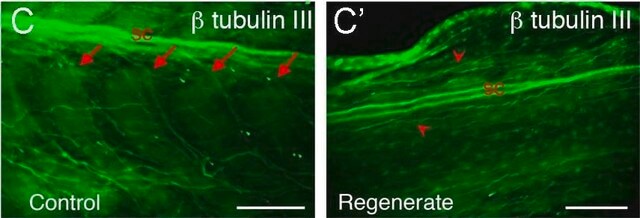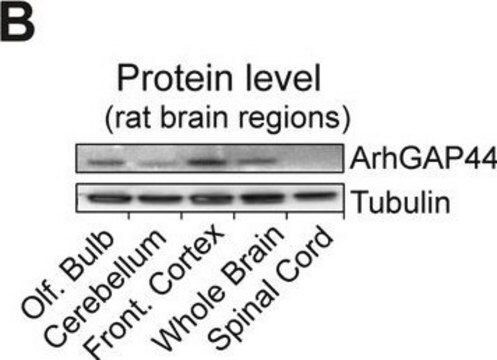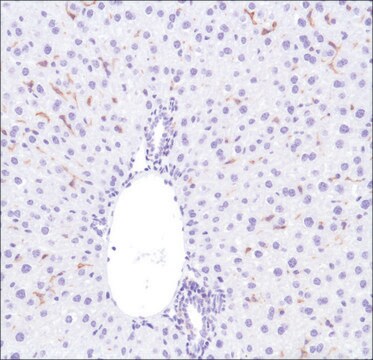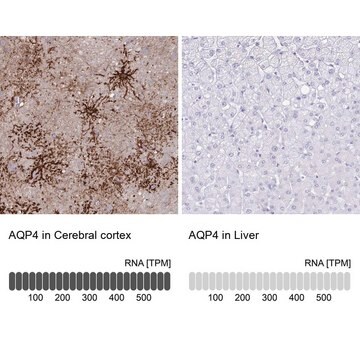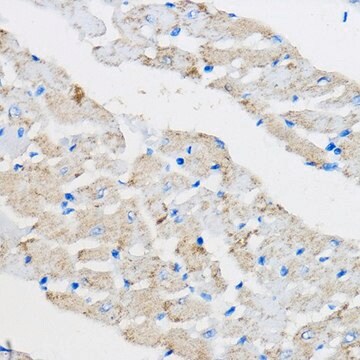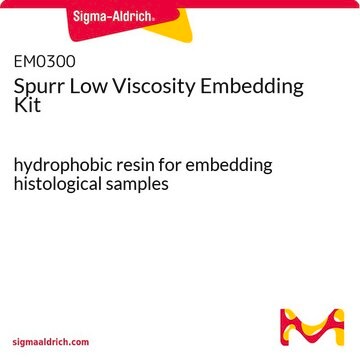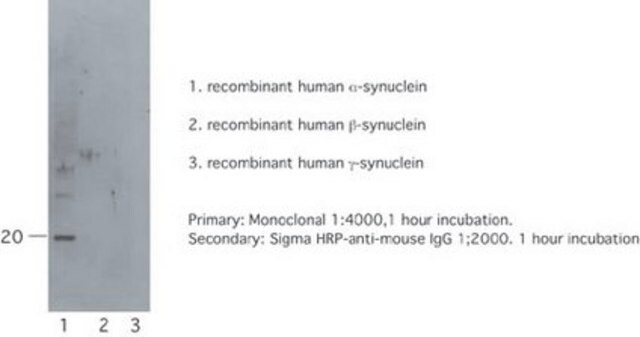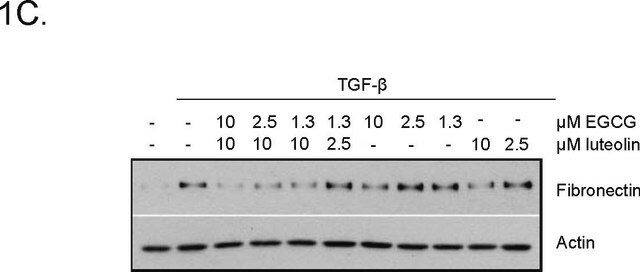MAB1435
Anti-Macrophages/Monocytes Antibody, clone ED-1
clone ED-1, Chemicon®, from mouse
Synonim(y):
Klon ED-1 przeciw makrofagom, Przeciwciało przeciwko monocytom, Przeciwciało wykrywające monocyty
About This Item
Polecane produkty
pochodzenie biologiczne
mouse
Poziom jakości
forma przeciwciała
purified immunoglobulin
rodzaj przeciwciała
primary antibodies
klon
ED-1, monoclonal
reaktywność gatunkowa
rat
spodziewany brak reakcji z
horse
producent / nazwa handlowa
Chemicon®
metody
flow cytometry: suitable
immunohistochemistry: suitable
immunoprecipitation (IP): suitable
radioimmunoassay: suitable
western blot: suitable
izotyp
IgG1
Warunki transportu
wet ice
docelowa modyfikacja potranslacyjna
unmodified
Powiązane kategorie
Opis ogólny
Macrophages are a type of white blood cell derived from monocytes that engulf invading antigenic molecules, viruses, and microorganisms and then display fragments of the antigen to activate helper T cells; ultimately stimulating the production of antibodies against the antigen.
Specyficzność
Clone ED1, which recognises a CD68 like molecule in rat is an excellent marker of activated microglia. For pan microglial markers, staining both resting and activated microglia, use like CD11b (MAB1387Z and others) or iba-1 (MABN92).
Immunogen
Zastosowanie
Flow cytometry at 1:100 - 1:200. Use 10 μL of this working dilution to label 10E6 cells.
Radioimmunoassay
Also suitable for Immunoprecipitation, and Western Blotting.
Optimal working dilutions must be determined by end user.
Inflammation & Immunology
Immunoglobulins & Immunology
Opis wartości docelowych
Powiązanie
Postać fizyczna
Przechowywanie i stabilność
Handling Recommendations: Upon receipt and prior to removing the cap, centrifuge the vial and gently mix the solution. Aliquot into microcentrifuge tubes and store at -20°C. Avoid repeated freeze/thaw cycles, which may damage IgG and affect product performance.
Komentarz do analizy
Macrophages, monocytes, lymphoid organs
Inne uwagi
Informacje prawne
Oświadczenie o zrzeczeniu się odpowiedzialności
Nie możesz znaleźć właściwego produktu?
Wypróbuj nasz Narzędzie selektora produktów.
Kod klasy składowania
12 - Non Combustible Liquids
Klasa zagrożenia wodnego (WGK)
WGK 2
Temperatura zapłonu (°F)
Not applicable
Temperatura zapłonu (°C)
Not applicable
Certyfikaty analizy (CoA)
Poszukaj Certyfikaty analizy (CoA), wpisując numer partii/serii produktów. Numery serii i partii można znaleźć na etykiecie produktu po słowach „seria” lub „partia”.
Masz już ten produkt?
Dokumenty związane z niedawno zakupionymi produktami zostały zamieszczone w Bibliotece dokumentów.
Klienci oglądali również te produkty
Nasz zespół naukowców ma doświadczenie we wszystkich obszarach badań, w tym w naukach przyrodniczych, materiałoznawstwie, syntezie chemicznej, chromatografii, analityce i wielu innych dziedzinach.
Skontaktuj się z zespołem ds. pomocy technicznej